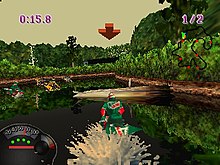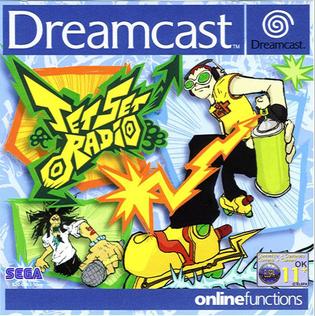
Jet Set Radio is a 2000 action game developed by Smilebit and published by Sega for the Dreamcast. The player controls a member of a youth gang, the GGs, as they use inline skates to traverse Tokyo, spraying graffiti, challenging rival gangs, and evading authorities.
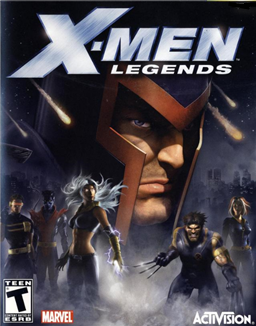
X-Men Legends is an action role-playing video game developed by Raven Software and published by Activision. It was released on the GameCube, PlayStation 2 and Xbox consoles in 2004. Barking Lizards Technologies developed the N-Gage port of the game, which was released in early 2005. Players can play as one of fifteen X-Men characters, with the ability to switch between four computer- or human-controlled characters at any time.
SingleTrac Entertainment Technologies was an American video game developer, mostly for the PlayStation platform. The management team and much of the original development team came from Evans & Sutherland, bringing their 3D graphics and software engineering skills into the video game industry. Its most famous titles were the Twisted Metal and Jet Moto video game series.

Twisted Metal 2 is the second game in the vehicular combat series, Twisted Metal. It was developed by the game studio SingleTrac, published by Sony, and released in 1996 for PlayStation and Microsoft Windows.

Jet Moto 2 is a 1997 racing video game developed by SingleTrac and published by Sony Computer Entertainment for the PlayStation video game console. It is the sequel to the 1996 game Jet Moto. It was released in North America on November 11, 1997, in Europe in April 1998, and in Japan on August 6, 1998. In January 2008 Jet Moto 2 was made available for the PlayStation Portable and PlayStation 3 via the PlayStation Network. The PlayStation Greatest Hits version, branded within the game as Jet Moto 2: Championship Edition, is slightly different from the original in that the framerate is increased, the number of competitors is limited to four, and all the original Jet Moto tracks are unlocked from the start.

Jet Moto 3 was released exclusively for the PlayStation video game console on August 30, 1999. It was the only Jet Moto title released by developer Pacific Coast Power & Light and publisher 989 Studios. It has been released only in North America. It was released on the PlayStation Network on February 21, 2008 but was removed shortly thereafter for undisclosed reasons.

Guitar Hero is a 2005 music rhythm video game developed by Harmonix and published by RedOctane for the PlayStation 2. It is the first main installment in the Guitar Hero series. Guitar Hero was released in November 2005 in North America, April 2006 in Europe and June 2006 in Australia. The game's development was a result of collaboration between RedOctane and Harmonix to bring a Guitar Freaks-like game to United States.

Rogue Trip: Vacation 2012, also known as Rogue Trip, is a vehicular combat video game developed by SingleTrac and published by GT Interactive for the PlayStation in 1998. The game is set in an apocalyptic fiction alternative history version of the year 2012 where mercenaries fight against each other using vehicles, and various weapons as they pick up tourists, hitchhikers, and passengers paying them fares for bringing them to vacation destinations around the remnants of the destroyed United States, and these mercenaries call themselves "auto mercenaries".

Marvel: Ultimate Alliance is a 2006 action role-playing video game, developed by Raven Software for the PlayStation 2, PlayStation 3, Xbox and Xbox 360, and published by Activision. The game was ported to the PlayStation Portable and Wii by Vicarious Visions, and to Microsoft Windows by Beenox. A different Game Boy Advance version was developed by Barking Lizards Technologies. A re-release version based on Xbox 360's latest edition was ported by Zoë Mode for Windows, PlayStation 4, and Xbox One, and was released in July 2016.

Sonic Riders: Zero Gravity is a hoverboard racing video game developed by Sonic Team and published by Sega for the PlayStation 2 and Wii. It is the fifth pure racing game in the Sonic the Hedgehog series, and the second entry in the Sonic Riders trilogy, a spin-off of the main series.

Guitar Hero: Aerosmith is a 2008 music rhythm video game developed by Neversoft and published by Activision. It was released on the PlayStation 3, Wii and Xbox 360 consoles, with Budcat Creations solely developing the PlayStation 2 port, Vicarious Visions solely developing the Wii port, and Aspyr solely publishing the Microsoft Windows and Mac OS X ports. The game was released on June 29, 2008 in North America, on July 27, 2008 in Europe, on August 6, 2008 in Australia and October 9, 2008 in Japan. Guitar Hero: Aerosmith sold as both a bundle with a specially designed guitar controller as well as a game-only package.
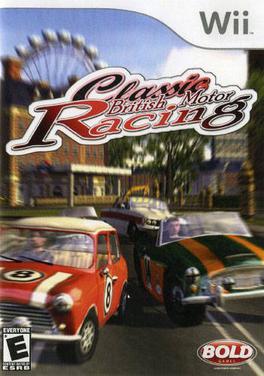
Classic British Motor Racing is a racing video game developed by budget developer Data Design Interactive. It was published by Bold Games (Destineer) in North America in early 2008, and in PAL regions 2–4 months later. The game features 13 tracks and 13 classic British cars licensed by the developer, and players drive around famous areas of Britain. The game is playable with up to two people. Reviews were critically negative, which the Wii version holds a score of 35.50% from GameRankings, while the PS2 holds a score of 35%, respectively. The PlayStation 2 and Windows versions were released on 10 February 2006.
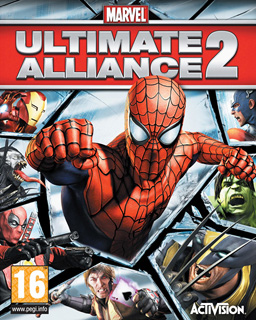
Marvel: Ultimate Alliance 2 is a 2009 action role-playing video game featuring characters from Marvel Comics. It is the sequel to 2006's Marvel: Ultimate Alliance, and the second installment in the Marvel: Ultimate Alliance series. The game was jointly developed by Vicarious Visions, n-Space and Savage Entertainment and published by Activision in September 2009. A port for the PlayStation 4, Xbox One and Microsoft Windows by Zoë Mode was released in July 2016.

Toy Story Racer is a 2001 kart racing game developed by Traveller's Tales and Tiertex Design Studios and published by Activision. It based on the Toy Story franchise, primarily the first film. The game was released in March 2001 for the Game Boy Color and PlayStation systems. The PlayStation version received "generally favorable reviews" according to Metacritic. In 2010, the PlayStation version was re-released on the PlayStation Store as a PS one Classic.

Fate/unlimited codes is a fighting game planned by Cavia, developed by Eighting, and published by Capcom. It was released in Japan for arcades on June 11, 2008, and for the PlayStation 2 on December 18, 2008. An enhanced port was released for the PlayStation Portable in Japan on June 18, 2009, and was subsequently released digitally on the PlayStation Store in North America and Europe on September 3 and 10, 2009, respectively.
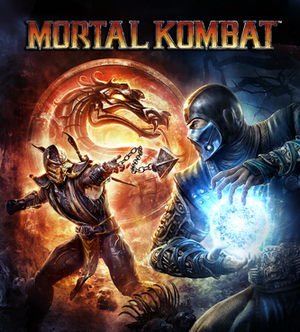
Mortal Kombat is a 2011 fighting game developed by NetherRealm Studios and published by Warner Bros. Interactive Entertainment. It is the ninth main installment in the Mortal Kombat series and a soft reboot of the series. The game was released for the PlayStation 3 and Xbox 360 systems in April 2011, and a PlayStation Vita port was released in May 2012. An expanded version of the game, titled Mortal Kombat: Komplete Edition, was released for Xbox 360 and PlayStation 3 in February 2012 and for Microsoft Windows in July 2013.
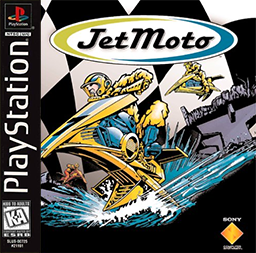
Jet Moto is a 1996 racing video game developed by SingleTrac and published by Sony Computer Entertainment for the PlayStation video game console and PC. The PlayStation version was released in North America on October 31, 1996; in 1997 for Europe in February and Japan on August 7. The PC version was released on November 13, 1997. Jet Moto was made available for the PlayStation Portable and PlayStation 3 via the PlayStation Network in February 2007. Developers chose fictional hovering bikes instead of wheeled motorcycles initially to resolve performance concerns. Other performance concerns led the team to develop two different physics systems—one for the player, and one for the 19 computer racers.

TT Superbikes Real Road Racing is a 2005 motorcycle simulation racing video game developed by Jester Interactive exclusively for the PlayStation 2 gaming console. The game was self–published by Jester in Europe, with Valcon Games and Taito handling publishing in North America and Japan, respectively. In North America, the game is licensed under Suzuki, an automobile manufacturer.

Jet X2O is a watercraft racing and stunt performance game that was developed by Killer Game and published by Sony Computer Entertainment.
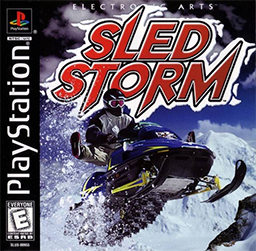
Sled Storm is a snowmobile racing video game published and developed by Electronic Arts. It gained critical acclaim due to its original concept of being one of the first snowmobile racing titles.

